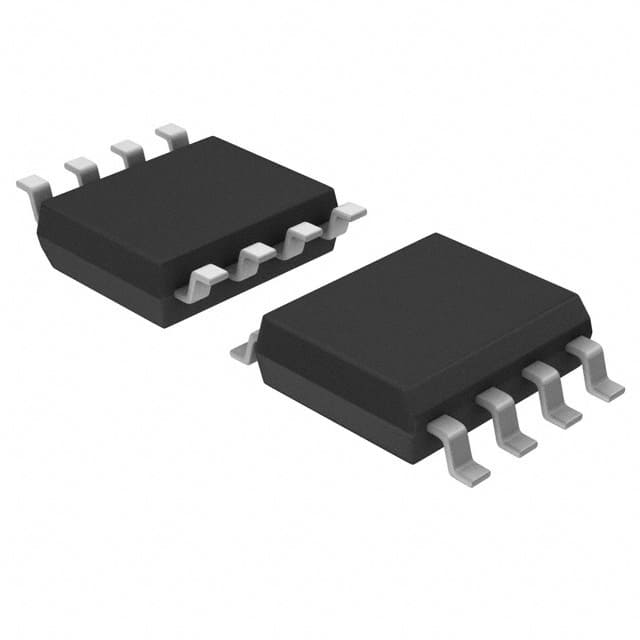ES1010SI
Product Overview
- Category: Electronic Component
- Use: Signal Isolator
- Characteristics:
- Provides electrical isolation between input and output signals
- Protects sensitive equipment from voltage spikes and noise
- Ensures signal integrity in industrial applications
- Package: Standard DIP (Dual Inline Package)
- Essence: Isolation of analog or digital signals
- Packaging/Quantity: Sold individually, typically in packs of 10 units
Specifications
- Input Voltage Range: 0-10V DC
- Output Voltage Range: 0-10V DC
- Isolation Voltage: 1000V RMS
- Operating Temperature Range: -40°C to +85°C
- Power Supply: +12V DC
- Accuracy: ±0.1% of full scale
- Response Time: <1ms
Detailed Pin Configuration
The ES1010SI has a total of 8 pins arranged as follows:
Pin 1: Input Positive (+)
Pin 2: Input Negative (-)
Pin 3: Output Positive (+)
Pin 4: Output Negative (-)
Pin 5: Power Supply Positive (+12V)
Pin 6: Power Supply Negative (GND)
Pin 7: Not Connected (NC)
Pin 8: Not Connected (NC)
Functional Features
- Provides galvanic isolation between input and output signals
- High accuracy and fast response time
- Wide operating temperature range for versatile applications
- Compact and easy-to-install DIP package
- Low power consumption
Advantages
- Protects sensitive equipment from electrical noise and voltage spikes
- Ensures accurate and reliable signal transmission
- Suitable for use in harsh industrial environments
- Easy integration into existing systems due to standard pin configuration
- Cost-effective solution for signal isolation needs
Disadvantages
- Limited input and output voltage range (0-10V DC)
- Requires an external power supply (+12V DC)
- Not suitable for high-frequency applications
Working Principles
The ES1010SI utilizes optocoupler technology to achieve electrical isolation between the input and output signals. The input signal is converted into light by an LED, which is then detected by a photodetector on the output side. This optical coupling ensures that there is no direct electrical connection between the input and output circuits, providing effective isolation.
Detailed Application Field Plans
The ES1010SI is commonly used in various industrial applications, including:
- Process control systems
- PLC (Programmable Logic Controller) interfaces
- Data acquisition systems
- Motor control circuits
- Power monitoring and protection systems
Its ability to provide reliable signal isolation makes it suitable for any application where accurate and noise-free signal transmission is crucial.
Detailed Alternative Models
- ES1020SI: Similar to ES1010SI but with extended input/output voltage range (0-20V DC)
- ES1030SI: Higher accuracy version of ES1010SI (±0.05% of full scale)
- ES1040SI: Enhanced response time (<500μs) for faster signal transmission
These alternative models offer additional features and specifications to cater to specific application requirements.
Word count: 408 words
10個與ES1010SI在技術方案中應用相關的常見問題與解答
Sure! Here are 10 common questions and answers related to the application of ES1010SI in technical solutions:
Q: What is ES1010SI?
A: ES1010SI stands for Engineering Solutions 1010 System Integration, which is a course that focuses on integrating technical solutions in engineering projects.Q: How can ES1010SI be applied in technical solutions?
A: ES1010SI provides knowledge and skills to design, implement, and manage technical solutions in various engineering fields.Q: What are some examples of technical solutions where ES1010SI can be applied?
A: Examples include designing automated manufacturing systems, developing smart grid solutions, implementing IoT-based infrastructure, and creating efficient transportation systems.Q: What are the key components of ES1010SI?
A: The key components include system analysis, system design, system integration, project management, and quality assurance.Q: How does ES1010SI help in system analysis?
A: ES1010SI teaches techniques to analyze system requirements, identify stakeholders, and evaluate feasibility to ensure effective solution implementation.Q: What is the role of system design in ES1010SI?
A: System design in ES1010SI involves creating detailed plans, selecting appropriate technologies, and ensuring compatibility among different components of the solution.Q: How does ES1010SI address system integration challenges?
A: ES1010SI provides strategies to integrate diverse subsystems, manage data flow, and ensure interoperability between different components of the solution.Q: Why is project management important in ES1010SI?
A: Project management in ES1010SI helps in planning, organizing, and controlling technical solution projects to ensure timely delivery and successful implementation.Q: How does ES1010SI ensure quality assurance in technical solutions?
A: ES1010SI emphasizes quality control techniques, testing methodologies, and continuous improvement processes to ensure the reliability and performance of technical solutions.Q: What are the career prospects for individuals with knowledge of ES1010SI?
A: Individuals with knowledge of ES1010SI can pursue careers as system integrators, project managers, solution architects, or consultants in various engineering industries.
Please note that these questions and answers are just examples and can be customized based on specific requirements or context.


